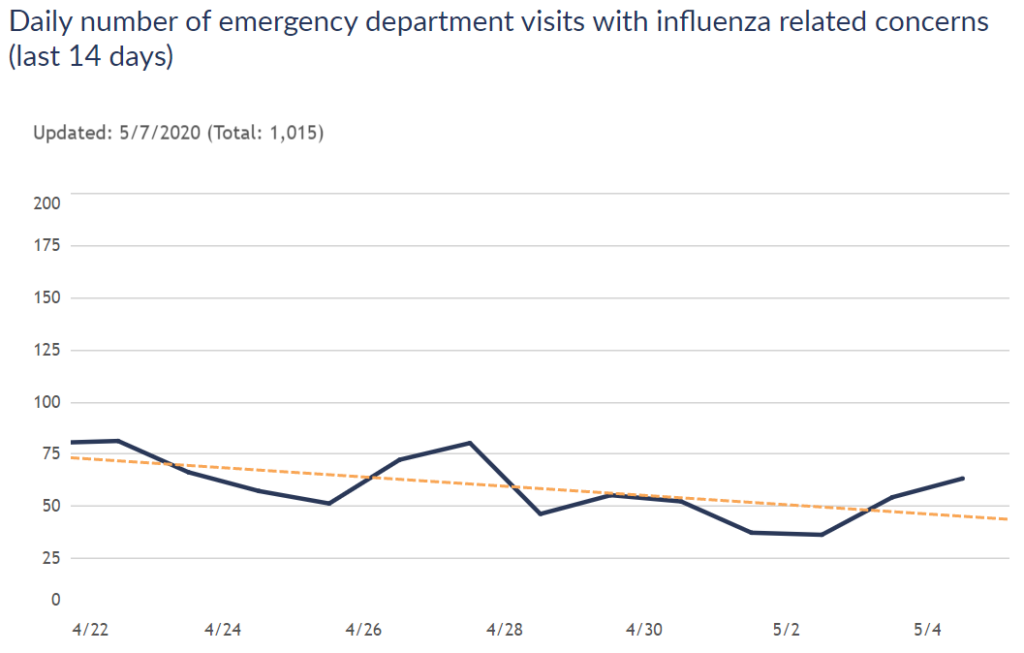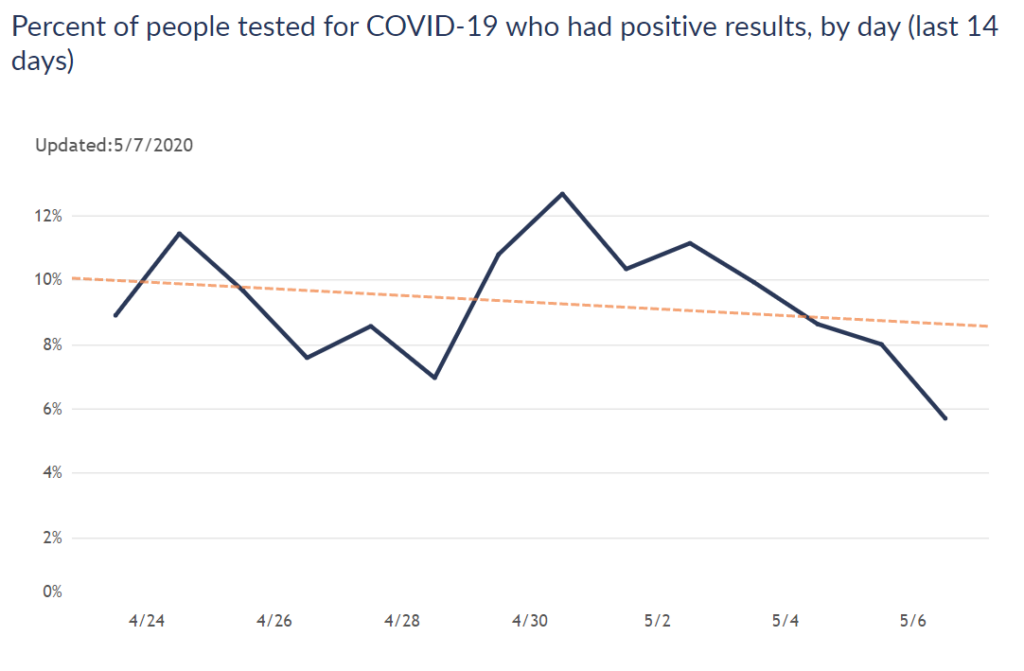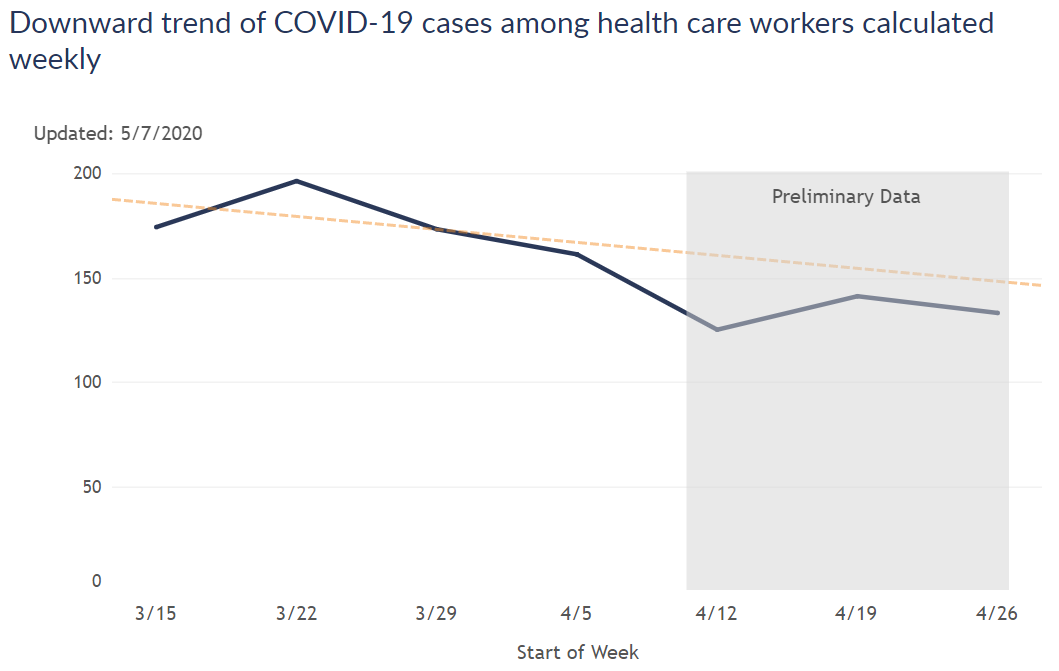WMC Calls on the Governor to End Safer at Home
MADISON – An analysis of data from Gov. Tony Evers’ Administration and the Department of Health Services (DHS) show that Wisconsin has met all of the governor’s criteria to begin to reopen the state’s economy.
Wisconsin Manufacturers & Commerce (WMC) – the combined state chamber, manufacturers association and safety council – concluded that based on the criteria set forth in Gov. Evers’ “Badger Bounce Back” plan, the state could begin to reopen its economy today.
In recent weeks, WMC called on Gov. Evers not to extend the Safer at Home order beyond April 24. After the order was extended, WMC unveiled its Back to Business plan that would have allowed all businesses to open safely on May 4.
“Wisconsin’s Safer at Home order was put in place to flatten the curve on the state’s COVID-19 cases, but now we need to focus on flattening another curve: the state’s unemployment filings,” said Kurt Bauer, WMC President & CEO. “While the governor has not adopted WMC’s plans to reopen the economy, his own data and metrics now say we can move forward.”
According to Emergency Order #31, “the state must make progress toward the goals identified below as Core Responsibilities and meet the Gating Criteria,” to begin to reopen the state’s economy. WMC’s analysis shows that is exactly what has happened.
“Gov. Evers has always said we need to trust the science and the data,” added Bauer. “It couldn’t be any clearer. The governor’s own data and metrics show it is time to reopen the economy. WMC and the business community call on Gov. Evers to take the next steps to get people back to work. The time is overdue to rescind the Safer at Home order and work with Wisconsin’s business community on a responsible and safe opening of the economy.”
WMC’s analysis is below:
The State Must Meet the Following Gating Criteria
Downward trajectory of influenza-like illnesses reported within a 14-day period – Achieved
According to DHS, Wisconsin saw a 14-day downward trend from 4/22 to 5/5 in emergency department visits with influenza related concerns. The downward trend line can be seen in the graph below:

Downward trajectory of COVID-19-like syndromic cases reported in a 14-day period – Achieved
According to DHS, Wisconsin saw a 14-day downward trend from 4/22 to 5/5 in emergency department visits with suspected COVID-19 related concerns. The downward trend line can be seen in the graph below:

Downward trajectory of positive tests as a percent of total tests within a 14-day period – Achieved
According to DHS, Wisconsin saw a 14-day downward trend from 4/24 to 5/7 in positive tests as a percent of total tests. The downward trend line can be seen in the graph below:

95% of hospitals affirm that they can treat all patients without crisis care – Achieved
The criteria for this metric examines if hospitals are unsafe, if non-patient areas are being used by a facility for patient care, if the volume of patients makes staff unable to adequately provide care and if critical supplies are lacking. According to DHS data, this metric is already being met because hospitals are not being overwhelmed by large volumes of patients. In fact, there are currently only 299 people hospitalized in Wisconsin for COVID-19 and 212 are pending testing, while hospitals in the state have 3,635 beds currently available. Additionally, the state has 1,264 ventilators available and only 314 are being used.
95% of all hospitals affirm that they have arranged for testing for all symptomatic clinical staff treating patients at the hospital per CDC guidelines – Achieved
Hospitals continue to report each week the number of health care workers who have experienced symptoms or have tested positive for COVID-19, as the chart below shows. Add to the fact that testing capabilities statewide have increased dramatically in recent weeks, this metric has certainly been met.
Downward trend of COVID-19 cases among health care workers calculated weekly – Achieved
According to DHS, Wisconsin saw a downward trend from 3/15 to 4/26 in cases among health care workers. The trend line can be seen in the graph below:

The State Must Make Progress Toward the Goals Identified as Core Responsibilities
Goal: 85,000 tests per week or approximately 12,000 tests per day – Achieved
According to a news release on Monday, May 4, “Gov. Evers shared that Wisconsin is prepared to provide 85,000 COVID-19 tests per week, ensuring that everyone in the state who needs a test receives a test.”
Goal: Increase contact tracing by up to 1,000 people and implement technology solutions to ensure everyone who is infected or exposed will safely isolate or quarantine – Significant Progress
According to a news release on Tuesday, May 5, Gov. Evers “detailed efforts for delivering on another primary component of the Badger Bounce Back Plan: contact tracing.” The release said local and public health agencies have completed nearly 18,000 contact tracing interviews since March and Gov. Evers said, “we’re expecting a big increase in the number of contact interviews per week, and we’re scaling up to meet that demand as well as deal with potential surges from local outbreaks.” The same release said DHS has already trained over 400 contact tracers and had more than 1,000 applications for the positions.
Goal: Building on systems used to track influenza, we will track the spread of the disease and report on the Wisconsin Gating Criteria and other related metrics to keep everyone informed about how we are doing – Achieved
The DHS website has a public dashboard that is updated daily with information about COVID-19 testing, cases and hospital capacity. It is easily accessible and shows that Wisconsin has met the gating criteria set forth by the Evers Administration.
Goal: Procure Personal Protective Equipment and other necessary supplies to support health care and public safety agencies – Significant Progress
Wisconsin has purchased and received thousands of donations of PPE, including a delivery of 230,000 N95 masks from FEMA. Gov. Evers also thanked numerous businesses and other groups in a news release on Sunday, May 3 for donating PPE to the state. The release said, “organizations that include the Wisconsin Dental Association, WEC Energy Group, Kohler, Snap-On Tools, Northern States Power Co., ND Paper, the Wisconsin Humane Society, and Foxconn have donated equipment such as masks, gloves, face shields and gowns toward the state supply of PPE.” Additionally, countless businesses in Wisconsin including Briggs & Stratton, C.G. Bretting, Columbia Vehicle Group, Husco, Jockey, Midwest Protyping, Novolex, Prent Corporation and others have switched over manufacturing facilities to produce different types of PPE.
Goal: Assess the need for and readiness to support surge capacity for our health care system – Achieved
As stated above, Wisconsin hospitals are not seeing major surges in cases. If surges did happen, there are ample resources to treat additional patients – including over 3,500 hospital beds and roughly 1,000 ventilators that are ready if needed.
“The ‘Badger Bounce Back’ order requires a downward trend in cases and symptoms, and we’ve now met that criteria in Wisconsin,” concluded Bauer. “If the governor refuses to reopen the state based on the latest data, which complies with the terms of his order, he owes Wisconsin businesses and workers an explanation of why he insists on continuing this economically devastating lockdown. People need to be given the chance to rescue their livelihoods, and now is the time to do that.”





